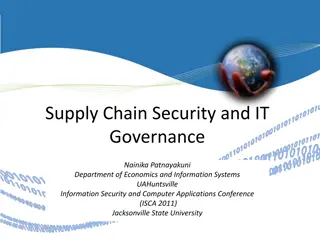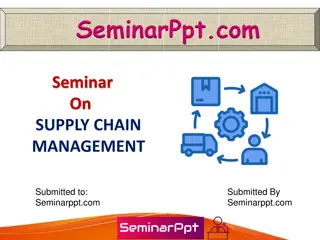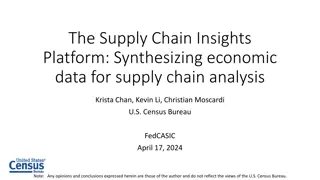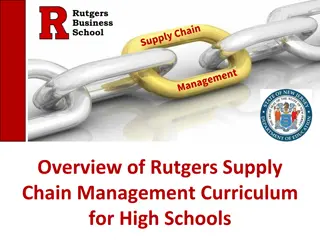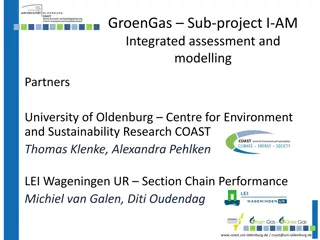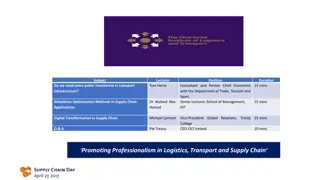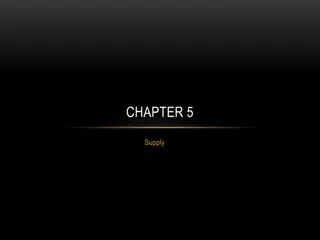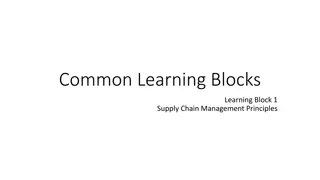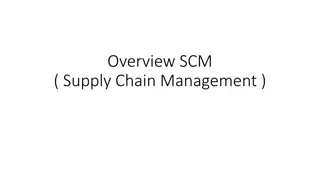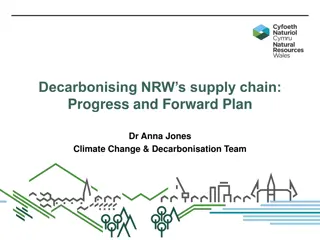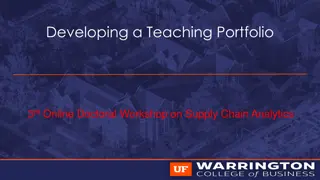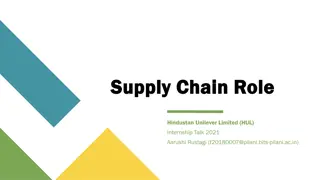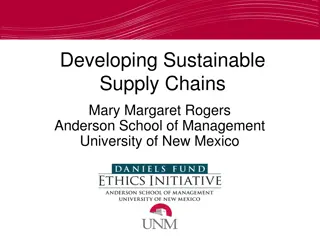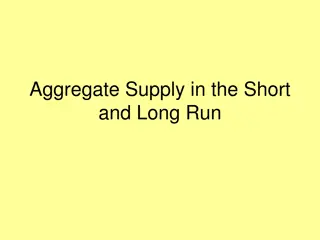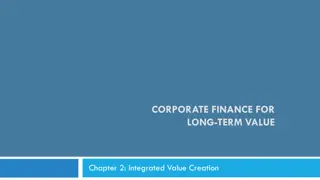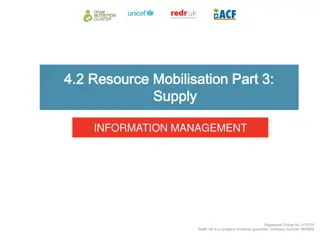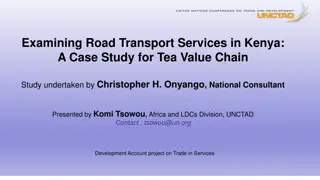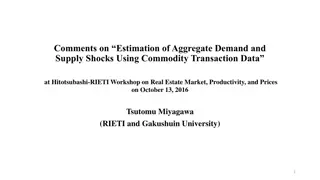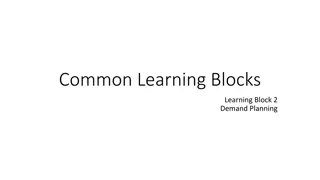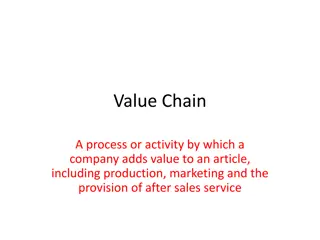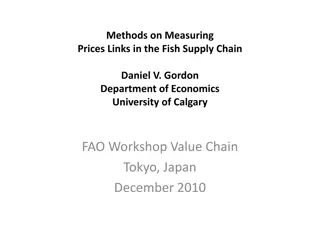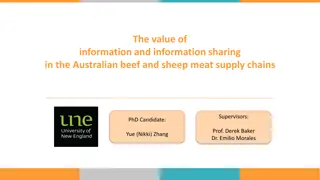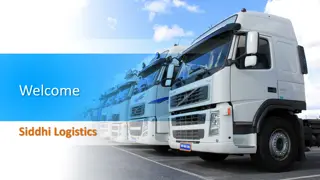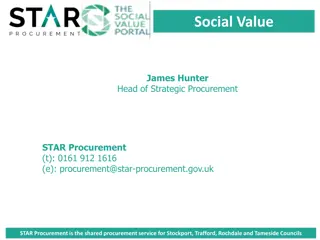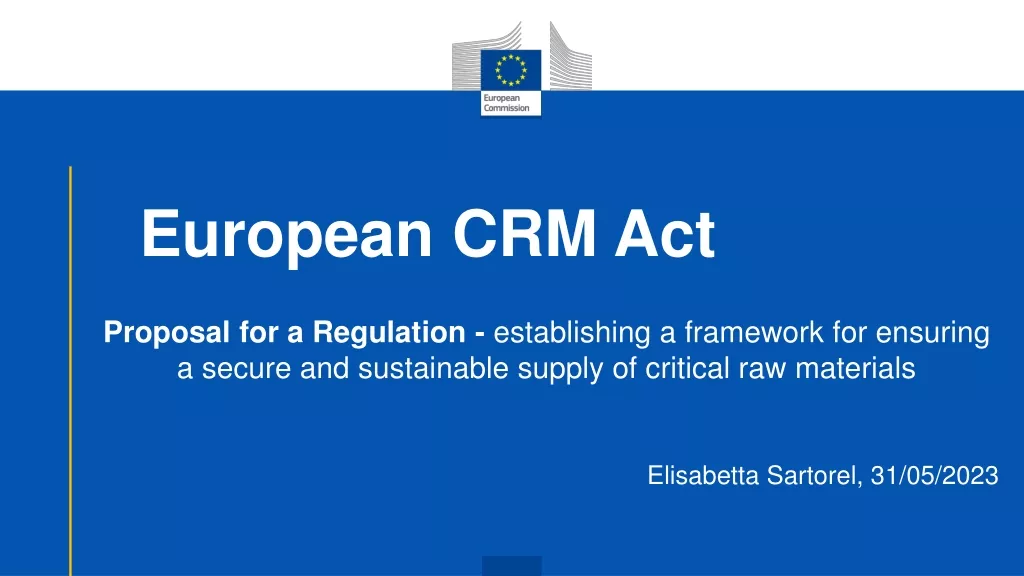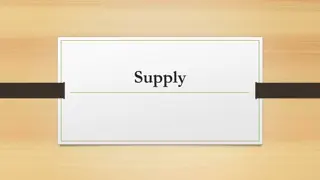Understanding the Value Chain and Supply Chain Dynamics
The value chain involves adding value through a series of activities from producer to consumer, focusing on meeting consumer demands and gaining a competitive advantage. On the other hand, the supply chain focuses on efficient and cost-effective product distribution to meet consumer needs. The primary difference lies in cost considerations and distribution efficiency, impacting consumer costs and manufacturer profits. Businesses use both chains strategically to match supply with demand and improve overall performance.
Uploaded on Sep 16, 2024 | 0 Views
Download Presentation

Please find below an Image/Link to download the presentation.
The content on the website is provided AS IS for your information and personal use only. It may not be sold, licensed, or shared on other websites without obtaining consent from the author. Download presentation by click this link. If you encounter any issues during the download, it is possible that the publisher has removed the file from their server.
E N D
Presentation Transcript
The Value Chain and the Supply Chain
Learning Intentions 1. Define the Value chain 2. Define the Supply Chain 3. Compare and contrast the Value and Supply Chains
Success Criteria 1. I can list several relevant similarities and differences between the Value Chain and Supply Chain 2. I can give reasons why the similarities and differences exist 3. I can make a general overall comparison between the Value Chain and the Supply Chain
The Value Chain The value chain refers to a set of activities in a process in order to deliver a product or service to the market from producer to consumer. At each activity, value is added through a series of inputs and actions in an order to produce, change and distribute a product which delivers value to the end consumer.
The Value Chain contd Product For every product, there is a unique value chain with its own sequence and set of activities with their inputs and actions, which continually adds value to that product. Demand-pull approach The demand from the end user impacts on what happens further up the value chain to meet that demand Objective Gain competitive advantage over products and businesses. A value chain that is profitable ensures that there are correlations between what the consumer demands and what the business can produce.
Supply Chain The supply chain also is about making and producing a product through a set of activities and getting it to the consumer. HOWEVER A supply chain is about getting the product to the consumer in the most efficient and cheapest way possible, without necessarily adding much value to it.
Supply Chain Objective Provide the right product at the right time at the right place for the right price.
Value Chain v Supply Chain The primary difference between a supply and a value chain are the cost of materials and efficient product distribution. An effective supply chain reduces consumer costs, increases the profit for the manufacturer and attempts to match supply with demand so that there is minimal inventory. The supply chain often is termed as a supply-push approach, as businesses tend to push the product out not necessarily thinking about the end user, the buyer or the consumer, just keeping the costs down, as they are competing with other businesses or cheaper imports.
Value Chain v Supply Chain A supply chain may never meet all the demands of the consumer as the business may not fully understand what their consumer wants. Many supply chains will eventually become value chains as they start to have more focus on the user needs, wanting to increase profit levels or be price makers.
Differences Similarities Differences making and producing a product through a set of activities and getting it to the consumer. because Demand pull Supply-push Get product to consumer in most efficient and cheapest way Add value at each activity Value Chain Supply Chain



